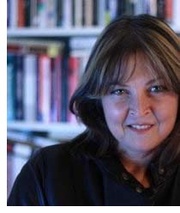>> Part 1
I emailed Rizzuto, who’s now a teacher at Goddard College in Vermont, where she teaches in the MFA in Creative Writing program, to see if I could ask several questions about her and the book. Here are excerpts from her responses:
1. Are you going by Reiko now instead of Rahna? (I noticed that in some places she’s called “Reiko” where in the past she’d gone by “Rahna”)
The name change, though it suits me and I am happy with it, was kind of an accident. When I came back from Japan, I was in total culture shock. I’d begun studying aikido there, and aikido practice was one of the few times where there were very few English speakers around me and many of my fellow students called me Reiko.
When I was on the aikido mat for the first couple of weeks back in New York, Japanese words and phrases came to me, since that is how I was taught aikido. It was like they were hardwired with my body movements. And on the first day, when someone asked me my name, “Reiko” is what came out.
It became easier to use one name, though recently as I go out into the world, I re-encounter people who know me as Rahna, and others who assume that is the name I use from seeing it on a book. So I’ve become very flexible with what people want to call me.
2. You obviously felt “more Japanese” at the end of your time in Japan — have you been able to keep that feeling in the years since?
Hmm… Not sure how to answer this question. Let me try:
I don’t feel Japanese per se. In Japan, I did adopt a more Japanese approach to my life, like not asking questions, and living in the moment. I also absorbed the culture and knew some of the expectations and ways of politeness, which I tried to follow. And I love it there, and I wanted to assimilate as much as possible. But when compared to the Japanese people around me, the truth was, I was still very much a clumsy gaijin doing my best not to be a total embarrassment.
But to speak directly to your question, I did change, and I think I have retained those changes though it’s been hard to do.
3. It’s taken you a long time to write this memoir. Is there a particular reason?
The delay is partially my own fear and partially the turmoil in the publishing world, I think.
The writing of the book went through many stages. Large passages come directly from the hand-scrawled diary I kept while I was living in Japan. I finished a first draft of a memoir in 2004, which had too much in it and was too close to the trauma of Sept. 11 to gain much sympathy from editors. So I put that away and then rewrote it as a hybrid: fiction and nonfiction. I had to bring it back to one genre after feedback from editors that it was too difficult to categorize and understand a book if you didn’t know whether it was real or made up.
So I revised again to make it a memoir, but written in both first and third person. Still not simple enough, but I found an amazing editor who loved it and told me to trust that it would work in first person. That took a day to change, honestly, and this is the book pretty much exactly as it was after my search and replace exercise. It’s still not an easy book, though, which is a drawback for many major commercial publishers right now.
But the main delay was in the time it took for me to become comfortable with putting my story out there unadorned. This is something that I work with as a teacher now all the time. It happened, but how do you make it art? How do you make it relevant to other people? How do you find the courage to show yourself without your best face on? With your frailties and flaws for everyone to see? It does take time and distance.
(END)
*This article was originally published in NIKKEI VIEW: The Asian American Blog on September 11, 2010.
© 2010 Gil Asakawa







